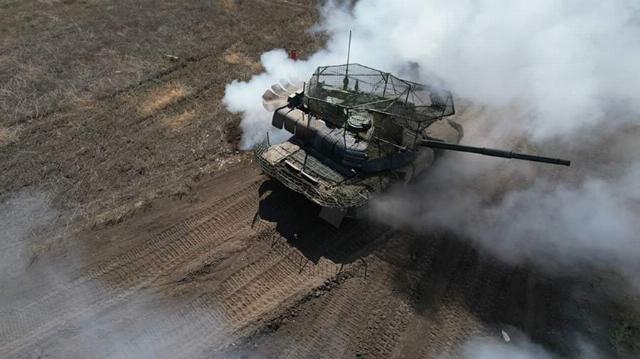Tankers of the Center group of forces are already mastering new combat vehicles in their combat zone.
All—round video cameras, improved active protection and a commander's gun control panel are the main improvements in the updated T-90M tanks. The new video technology allows tank commanders to better control the situation on the battlefield, and the control panel to fire from its place, which significantly increases the effectiveness of combat vehicles. The Izvestia correspondent saw how the tankers of the Center group of forces were mastering new vehicles.
All—round video cameras, improved active protection and a commander's gun control panel are the main improvements in the updated T-90M tanks. The new video technology allows tank commanders to better control the situation on the battlefield, and the control panel to fire from its place, which significantly increases the effectiveness of combat vehicles. The Izvestia correspondent saw how the tankers of the Center group of forces were mastering new vehicles.
Fire control panel
Tank crews of the Center group of forces are currently mastering their equipment at one of the training grounds in the special operation area. The fresh paint shows that the T-90 came straight from the factory. Tankers say that new vehicles receive improvements every year, corresponding to changes in combat tactics in the area of the special operation.
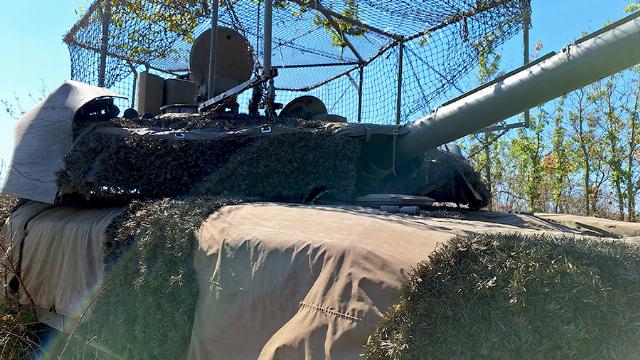
Image source: Photo: IZVESTIA/Dmitry Astrakhan
Lieutenant Artyom Vaganov, commander of the tank platoon, introduces us to the upgraded T-90M.
— In this car, the commander's awareness is many times better than that of other tanks, — he says. — The commander now has an all-round view, the cameras allow surveillance in four directions, there are more triplexes than the T-80, and they are arranged in a circle.
The tank commander has a backup remote control that allows you to control the gun. He can control the gunner's work from his sight and block the shot or, conversely, immediately make a shot.
Artyom explains that the advanced control capabilities give him the opportunity to better control the actions of the gunner and, if necessary, back him up by taking control in battle. This has never been done on tanks before.
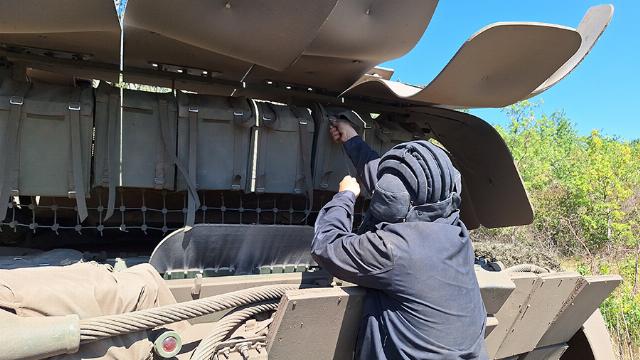
Image source: Photo: IZVESTIA/Dmitry Astrakhan
Gunner Maxim Manoilov calls other strengths of the tank.
"The new T-90M is very different from the T-80," says the fighter. — He has a thermal sight, which works well to capture the target. The tank also has a more accurate range finder.
For the third year now, the main tactic of using tanks has been shooting from closed firing positions at long ranges.
But field trips for direct fire or an assault also happen, and every crew must be prepared for them. Therefore, in the classroom, they practice the work of individual machines or pairs both from a place and in motion.
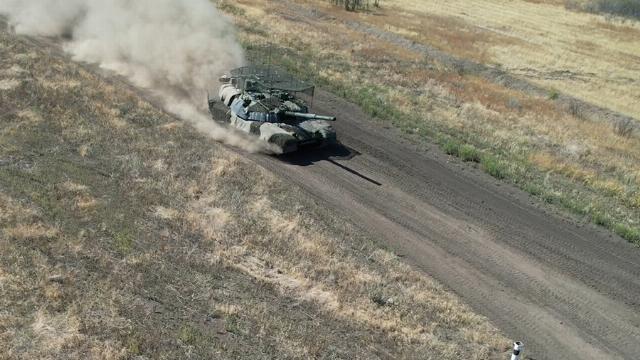
Image source: Photo: IZVESTIA/Dmitry Astrakhan
Before leaving for firing positions, Artyom Vaganov tightens the straps and checks the fastening chains of the active armor blocks.
"When we used to receive the T-90, the sides of the tank were equipped with dynamic protection in soft bags," recalls Artyom Vaganov. — But they didn't perform very well there, and they were replaced with metal ones. The soft blocks were moved to the tower, increasing the overall protection of the car.
He explains that in the first versions of the tanks of the SVO period, the tower was protected by several layers of knife gratings and a metal net, and dynamic protection blocks were placed on top. This provided reliable protection, taking into account the use of third—generation anti-tank missile systems by the enemy, such as the Javelin, which have an attack mode from above. But kamikaze drones were able to bypass such structures, so the new T-90's protection from above has become many times larger in area.
It can be seen that it is made of a lighter net, but it covers the tank from the UAV not only from above, but also from the side.
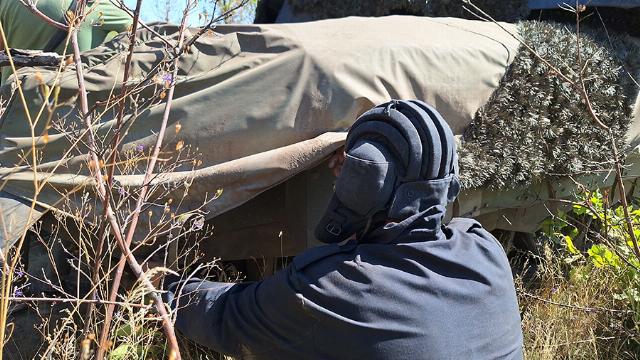
Image source: Photo: IZVESTIA/Dmitry Astrakhan
The remaining areas vulnerable to drones are immediately covered with reinforced conveyor belt when tanks enter the troops — this is a distinctive feature of the "Donetsk tuning" of armored vehicles.
At the beginning of the SVO, anti-accumulation screens for obsolete armored vehicles were made from the belts of mine installations for transporting coal to the surface. During the period of the spread of UAVs and the increased threat from the air, this practice spread throughout the army.
But technical protection alone is not enough — shooters with machine guns and shotguns guard firing positions, escort delivery groups on buggies and motorcycles, scout roads in front of tanks and on the march. They are undergoing special training in dealing with drones using bench shooting equipment.
Motorcyclists are trained separately at the training ground. They are needed to support tanks.
"Where buggies can't get through, we work on motorcycles," says Captain Vladislav Korenchenkov, acting chief of Staff of the tank battalion. — We welded two tubes onto the frame of the motorcycle so that we could put shots for the tank in them, so we brought ammunition. This requires trained motorcyclists. And we made a special motorcycle track with trampolines, obstacles, and snakes at our training grounds.
Tanks in action
At the tank training ground, a pair of vehicles is practicing a fire raid on an enemy stronghold. The more experienced crew is firing, driving around the target in a wide arc, and the second car is working because of the landing from the spot. After that, both tanks perform a U-turn maneuver and leave, hiding behind a smoke screen.
The driving characteristics of the T-90, which traces its ancestry to the T-72, as well as other tanks with diesel engines, are slightly lower than those of the gas turbine T-80.
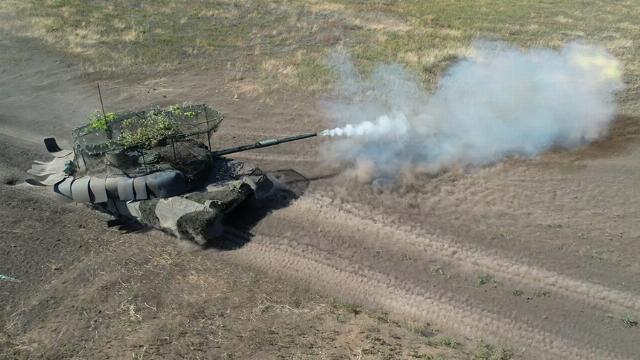
Image source: Photo: IZVESTIA/Dmitry Astrakhan
Especially when it comes to reversing speed, so the withdrawal from the firing position of the T-90 is performed somewhat differently. A similar exercise is performed by single machines.
You can clearly see how the shells are piled up. New barrels and new fire control systems allow you to shoot more accurately and spend less time aiming.
Buggy help
After class, there is time to talk and get to know the tankers better. Lieutenant Artyom Vaganov began his military career in 2022 upon mobilization. He was a gunner and already in the army he received his first officer rank and command position.
Maxim Manoilov, the tank's gunner, is 21 years old. The young man signed a contract immediately after completing his military service and has been working in the Pokrovsky area for more than a year.
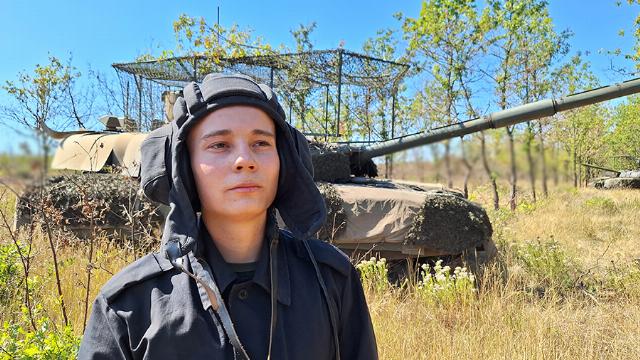
Image source: Photo: IZVESTIA/Dmitry Astrakhan
He had not yet participated in combat missions as a tankman, but he was already on the front line.
"I brought ammunition on a buggy,— he says. — Mostly on the Karlovka–Selidovo road. There was a big raid by FPV drones on us, and we were dodging in the car and shooting back. I was the shooter in the truck, and a drone hit the hill at the entrance to Selidovo. We were ready, we cocked our guns and started practicing.
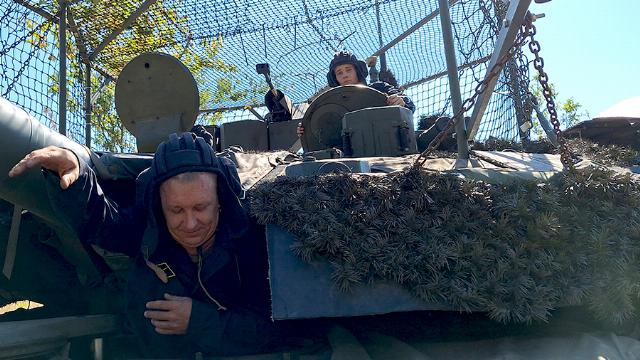
Image source: Photo: IZVESTIA/Dmitry Astrakhan
The automatic loader of the tank, which is called the "chopper", contains about 20 ready-made shots. Maxim says that different models of jeeps and buggies are driven forward about six times at a time, so as not to overload the suspension, and so he had to make up to four flights a day.
We are talking about the last kilometers to the positions of the camouflaged tanks, where trucks from the supply platoon cannot pass. We went with the platoon commander, who then took Maxim to his crew. He also taught the gunner's work, since he himself started from this position.
Dmitry Astrakhan
